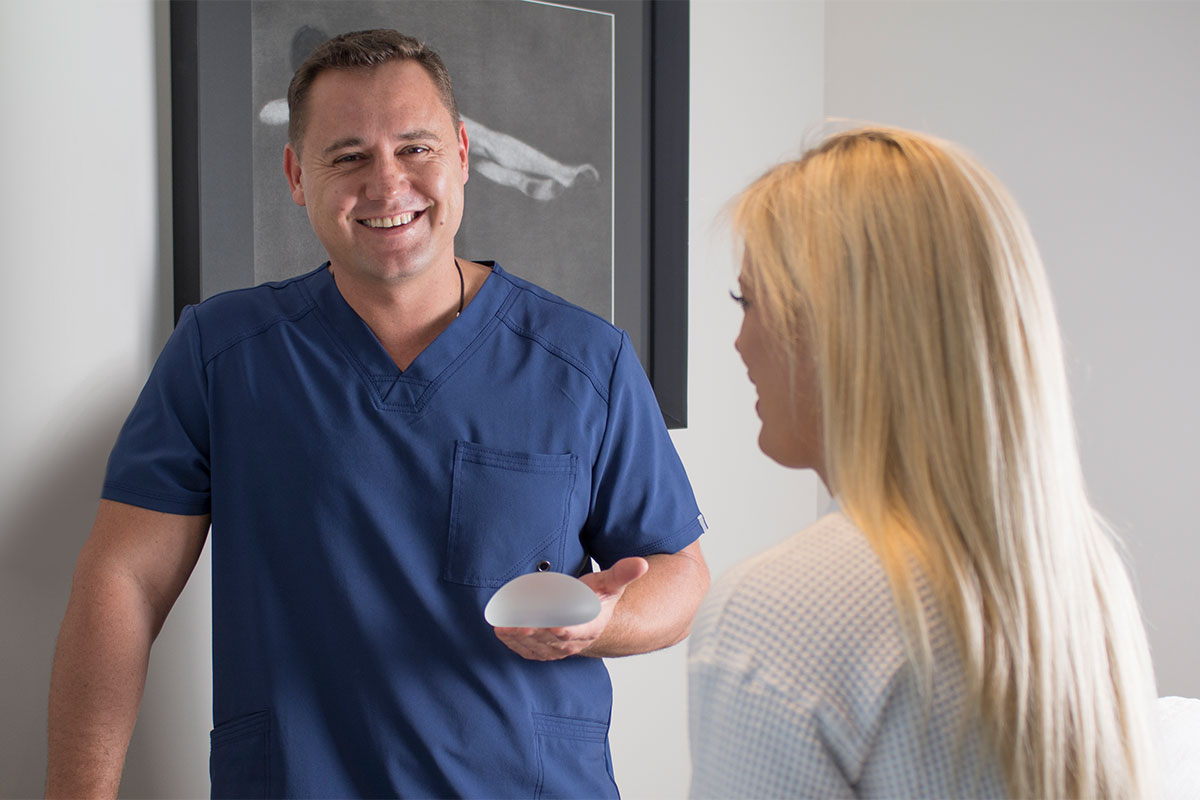A breast augmentation involves placing a prosthesis or implant under the breast tissue. This prosthesis contains a silicone shell with the contents of the shell being either silicone or saline. I only use silicone implants. In my opinion, silicone implants are more durable and feel more natural than saline implants.
The implant can be placed either under the muscle or on top of the muscle.
There are only 4 possible incisions that a surgeon can use to insert the implant in your breast:
- Infra-mammary (underneath the breast)
- Peri-areolar (under the nipple)
- Axillary (in the arm pit)
- Umbilicus (belly button)
I only perform an incision under the breast (infra-mammary). Unless you are having a revision breast augmentation and you have an existing peri-areolar scar, I may elect to use the pre-existing peri-areolar scar to access your existing breast pocket. The infra-mammary incision provides me with clear and direct vision to accurately create a “pocket” for the implant. It is essential that an accurate pocket is made otherwise aesthetic complications may occur. It is impossible to insert a silicone implant through your umbilicus. As evidenced in several studies, implants placed through the nipple or the arm pit may have a higher incidence of capsular contracture (hardening of the breast). There is not a single study that has demonstrated any risk of developing cancer, autoimmune disease, or any other disease both short term and long term with silicone smooth and nano-textured implants. Anaplastic Large cell Lymphoma (an extremely rare type of cancer) has been associated with the use of macro-textured implants. I do NOT use macro-textured implants unless the patients requests this implant.
There are 2 options when it comes to the shape of the implant: round or anatomical.
In very select group of patients, anatomical implants may be beneficial. I use round nano-textured or smooth implants in 99% of my patients.
More importantly is the profile and width of the implant. The factors that determine the profile (medium, high, or extra-high) and implant width are:
- Your preference
- The dimensions of your breast
- The amount of skin laxity
- The shape of your chest
- The degree of breast ptosis (droopiness)
It is extremely important to realize that every woman has a unique pair of breasts and although your preference in size and profile can sometimes be accommodated, it is much more important to match the appropriate implant with the characteristics of YOUR breast. It is also important to know that complications such as asymmetry, implant malposition, capsular contracture and risk of revision increases, the larger the implant.